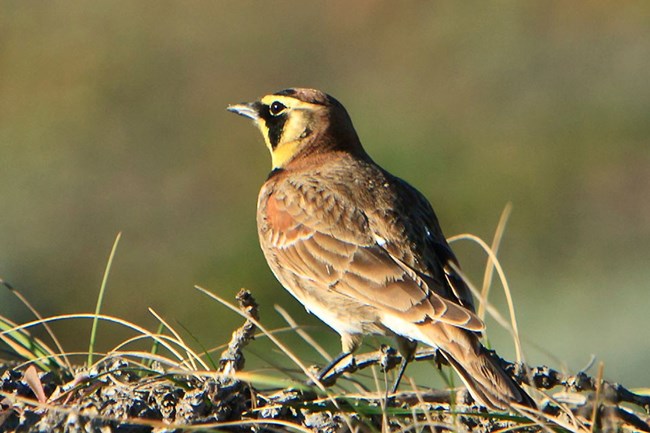The island subspecies, insularis, shows all of the characteristics typical of change in the island birds including darker color, a longer broader bill, longer tarsi, and longer toes. They also have shorter wings and tail. This subspecies has some streaking below.
Range
Besides breeding the Channel Islands, the horned lark breeds in Alaska and Canadian Arctic, coastal Canada, and south throughout all of the U.S. except in the Southeast. Horned larks winter from southern Canada southward;also found in Eurasia.
Habitat
Larks are common to abundant residents in a variety of open habitats, usually where trees and large shrubs are absent. It is found from grasslands along the coast and deserts near sea level to alpine dwarf-shrub habitat above tree line In winter, flocks in desert lowlands and other areas augmented by winter visitants, many migrating from outside the state.
Feeding
Adult horned larks eat primarily weed and grass seeds, but they feed insects to their young.1 The horned lark searches for food by walking along the ground.
Reproduction
The horned lark breeds from March through July, with peak activity in May. The lark pair nests solitarily;with two to five gray or green eggs spotted brown, which are laid in a nest made of grass lined with feathers and soft materials and built in a shallow depression, natural or dug by the female. Incubation ranges from 11 to 12 days and is carried out mostly by the female. A pair frequently raises 2 broods in a season. Incubation is 10-14 days;altricial young tended by both parents. Young leave nest at 9-12 days, and can fly 3-5 days later.
Conservation Status
The global population of this bird does not show signs of decline that would necessitate inclusion on the IUCN Red List. For this reason, the current evaluation status of the Horned Lark is Least Concern.
Additional Information

